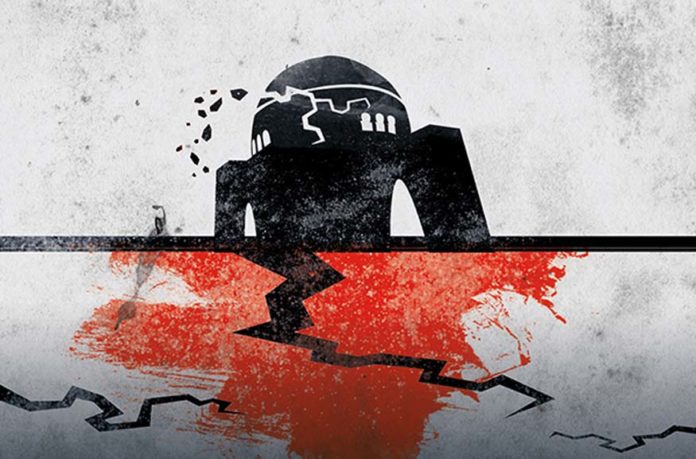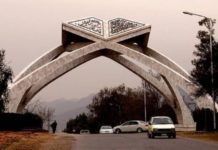Work has started on preparing the site for two large nuclear power plants in Karachi. Each of these reactors will be larger than the combined power of all the nuclear reactors currently operating in Pakistan.
This will be by far the largest nuclear construction project ever in Pakistan. It is not too late to ask a few basic questions so that people, especially those living in Karachi, know what they may be letting themselves in for.
Everyone knows the new reactors are being purchased from China. They will be designed and built by the China National Nuclear Corporation (CNNC).
What people may not know is that the reactors will be based on a design known as the ACP-1000 that is still under development by this Chinese nuclear power company. In effect, Pakistanis are buying reactors for the Karachi site that so far exist only on paper and in computer programmes — there is no operating reactor in China based on this design.
It was reported in April 2013 that the CNNC, the developer of the ACP-1000, had completed a “preliminary safety analysis report”, and was “working on construction design”.
This means so far there is not even a complete design. Since the new Karachi reactors will be the first of a kind, no one knows how safe they will be or how well they will work. The 20 million people of Karachi are being used as subjects in a giant nuclear safety experiment.
The Fukushima nuclear accident has shown that safety systems can fail catastrophically. The accident in 2011 struck Japanese reactors of a well-established design that had been operating for decades. Still, all kinds of things happened that were not expected by the reactor operators or managers or by nuclear safety authorities.
An important lesson of Fukushima is that nuclear establishments underestimate the likelihood and severity of possible accidents. Another important lesson is that these same establishments overestimate their ability to cope with a real nuclear disaster.
At Fukushima, the nuclear authorities failed dismally despite Japan’s legendary organisational capability, technological sophistication and social discipline.
Nearly 200,000 people living close to the Fukushima reactors were evacuated and some may never be allowed to return. Radiation was blown by the wind and contaminated the land to distances of over 30 km.
The US suggested its citizens living in that area of Japan move at least 80km away from the reactor. The government of Japan considered forced evacuation of everyone living within 170km of the reactor site and organising voluntary evacuation for people living as far as 250km from the plant.
Contaminated food and water was found at distances of 250km.
The financial cost of the clean-up so far is estimated to be about $100 billion and could eventually be much higher.
So how big, how dangerous and how costly is the nuclear experiment about to be carried out in Karachi?
An analysis undertaken two years ago, in 2011, by the science magazine Nature and Columbia University in New York showed that the nuclear reactor site in Karachi has more people living within 30km than any other reactor site in the world.
It found that, in 2011, there were eight million Karachi citizens living within this distance of the reactor. All of Karachi falls within 40km of the reactor site.
So far, there have been no public hearings or discussions of the suitability of the site for the new Karachi reactors. There is no report of an Environment Impact Assessment for the proposed new Karachi reactors. Neither the Pakistan Atomic Energy Commission nor the Pakistan Nuclear Regulatory Authority has explained what will happen in case of an accident at the proposed reactor.
A preliminary study by one of the authors found that the plume of radioactive material that could be released from a severe nuclear accident could be blown eastward by the wind over the city, engulfing the most populous areas of Karachi.
There is also no information on the terms for the supply of nuclear fuel, such as how long the very hot, intensely radioactive spent nuclear fuel will stay at the site and how will it be safely stored until it is returned to China, if it is returned at all. The spent fuel stored at Fukushima was damaged in the accident and led to the release of radioactivity.
Finally, there is no information on what emergency plans, including for possible evacuation, have been drawn up as part of preparing for these large new reactors. There is no information whether such plans even exist.
Here is a question for those in charge of Karachi, in charge of Sindh and the federal authorities in Islamabad: how do you propose to evacuate many millions of people from Karachi in case of a severe nuclear accident at the new reactors?
One expects mass panic, with people deciding to save themselves and their families as best as they could, clogging the roads, and delaying the escape of others closer to the reactor. Can any plan work in such an environment?
Finally, there is the cost in terms of money. Reports suggest the two reactors may cost $9-10 billion. They will be paid for by taking loans from China. There is little information on the details of the financing of the reactors, including the final cost of decommissioning and waste disposal.
There is not even a publicly available government study showing that these reactors are the least-cost option for producing the expected amount of electricity.
The issue of cost also must include the consequences of accidents. If there is an accident at the new Karachi reactors due to a problem with the reactor design or the construction, who will pay the vast sums needed to cover the damage and clean-up — Pakistan or China?
The people of Karachi have a right to know the answers to these questions. It is time they started asking.







